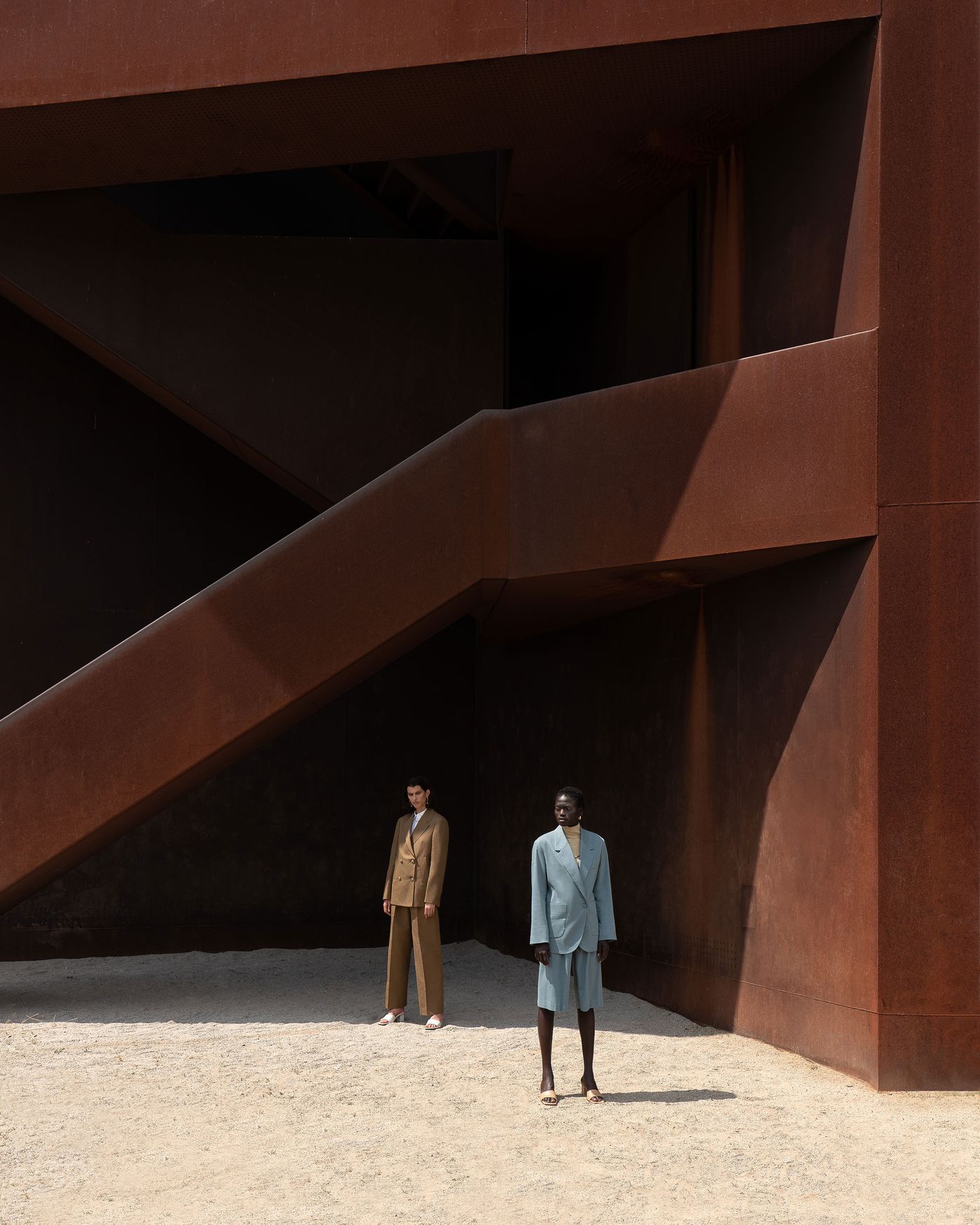
George Kroustallis Captures the Evocative Utopias at the Confluence of Fashion & Architecture
Words by Eric David
Location
George Kroustallis Captures the Evocative Utopias at the Confluence of Fashion & Architecture
Words by Eric David
For George Kroustallis, digital-focused interdisciplinary creatives are the future of the design world. Having honed his skills in several creative fields, from fashion editorials, to commercial campaigns, to architecture photography, the London-based creative director and photographer is now focusing on combining them in inter-disciplinary projects that initiate a dialogue between them. His latest endeavour “Utopia: Sisters” explores the beauty of form, structure and texture at the intersection of fashion and architecture (the two titular sisters), drawing parallels between them. Capturing two female models on and around a sculptural observation tower that presides over a vast expanse of manmade lakes and canals in Germany, the series evoke a sense of stillness, steadfastness and optimism, as well as embodies Kroustallis’ love of the female form. Lyrical and symbolic, the utopia that Kroustallis has conjured unfolds, in his words, as “a landscape where fashion and architecture will keep growing together, inspiring one another, more interconnected than ever”.
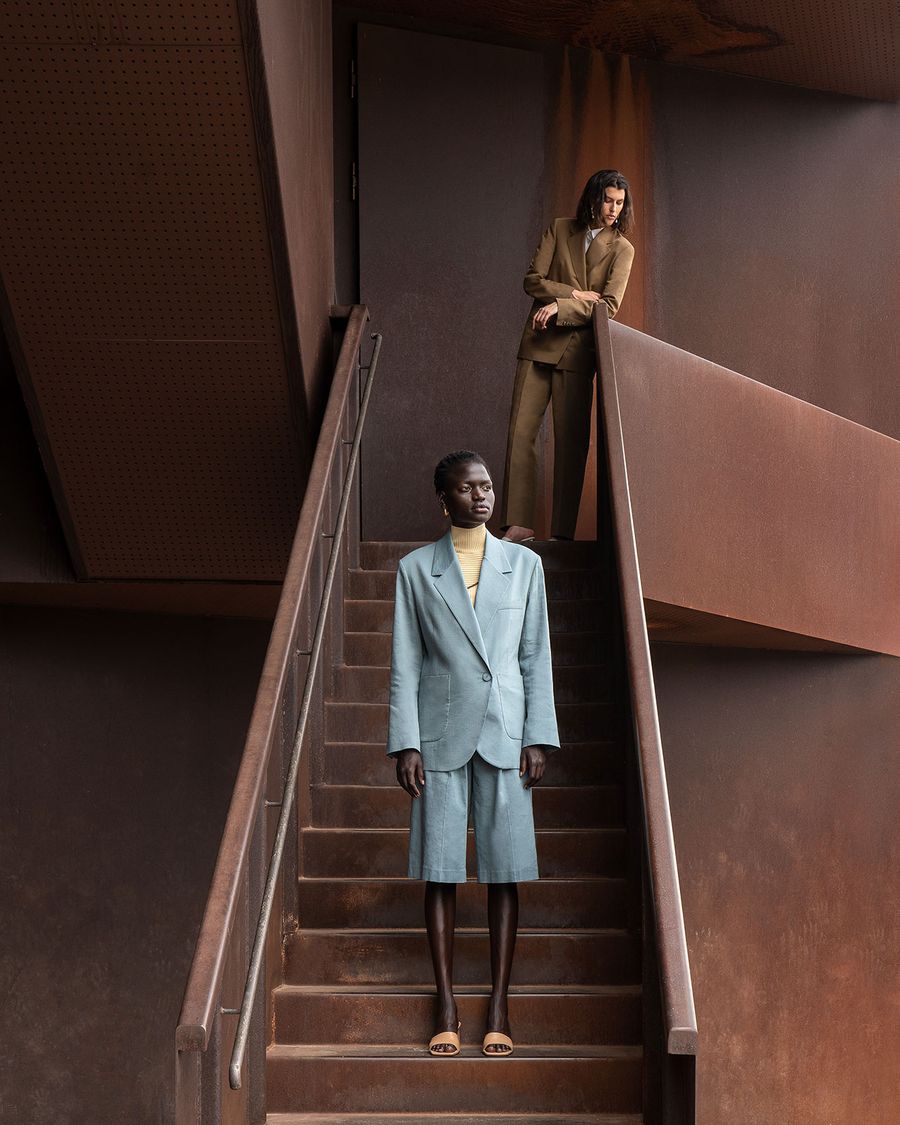
Photography by George Kroustallis.
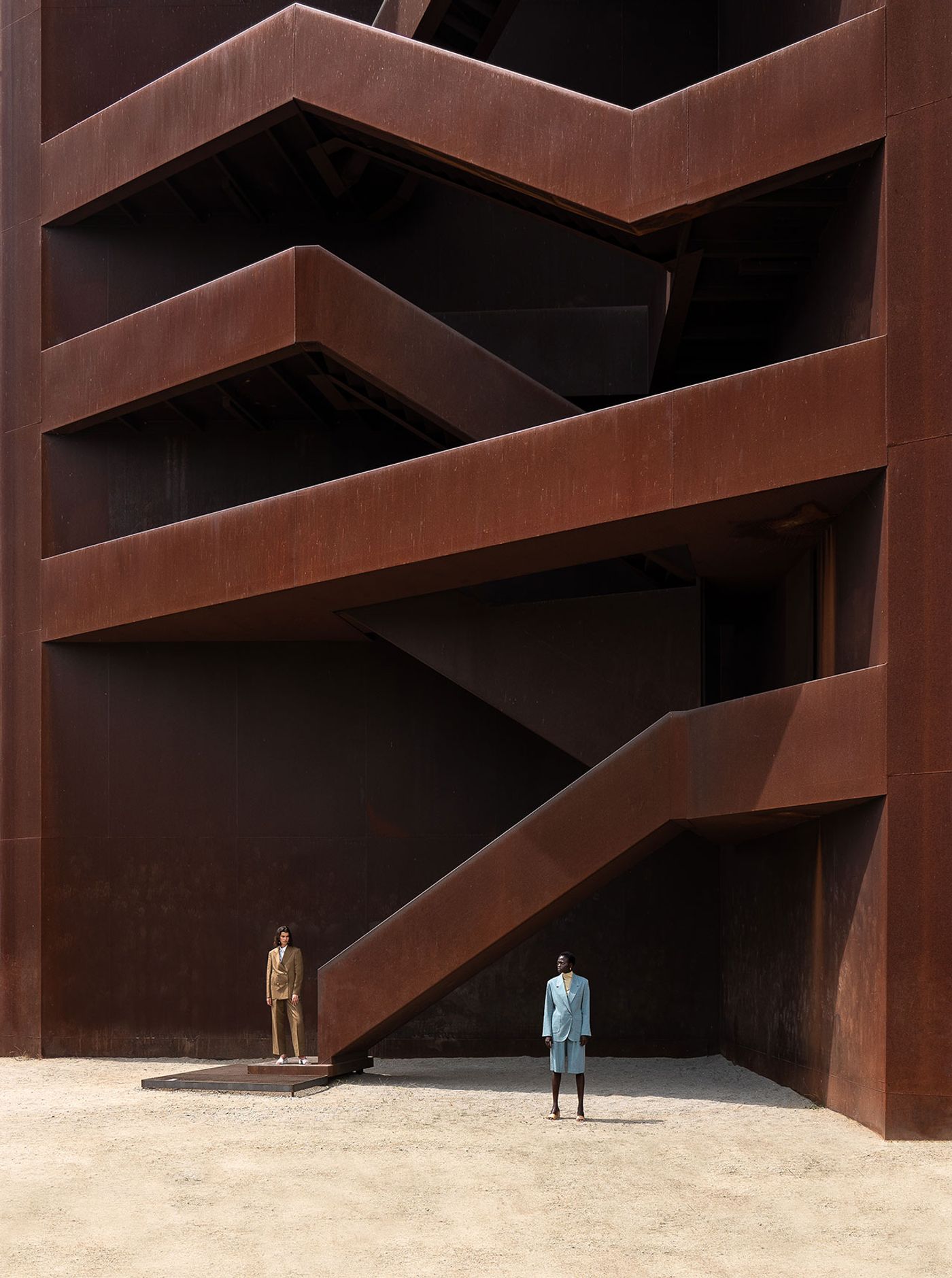
Photography by George Kroustallis.

Photography by George Kroustallis.
Located in the Lusatian Lake District north of Dresden, the largest artificial lake landscape in Europe, the 30-metre-high Corten steel, walk-in sculpture by Munich-based architect Stefan Giers and Susanne Gabriel, locally known as "Rostiger Nagel" (rusty nail in German) due to its rusty, orange-brown patina, cinematically towers over the low-lying countryside. “It's a fascinating place, and I instantly connected with it”, Kroustallis told Yatzer in a recent chat. “It's an architectural moment that wasn't built because somebody had to, it was built because it had a story to tell.” The tower recalls the region’s industrial past - lignite mining shaped the area for over 150 years – but it’s also a symbol of change; what was once a desolate agglomeration of mining pits is now an idyllic landscape of lake and fields. “To me”, Kroustallis says, “it connected brilliantly with what I'm trying to do on the creative side of things”.
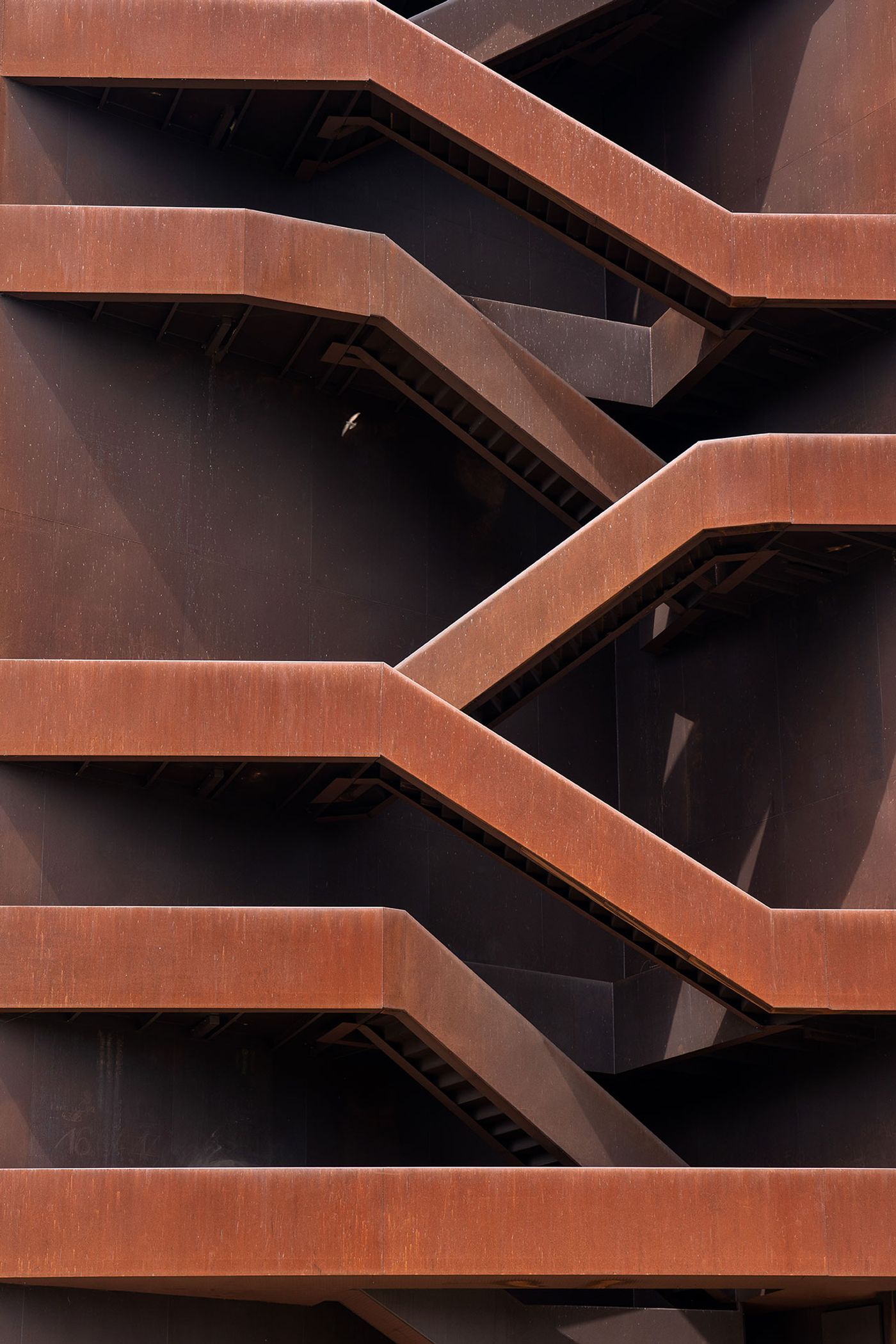
Photography by George Kroustallis.
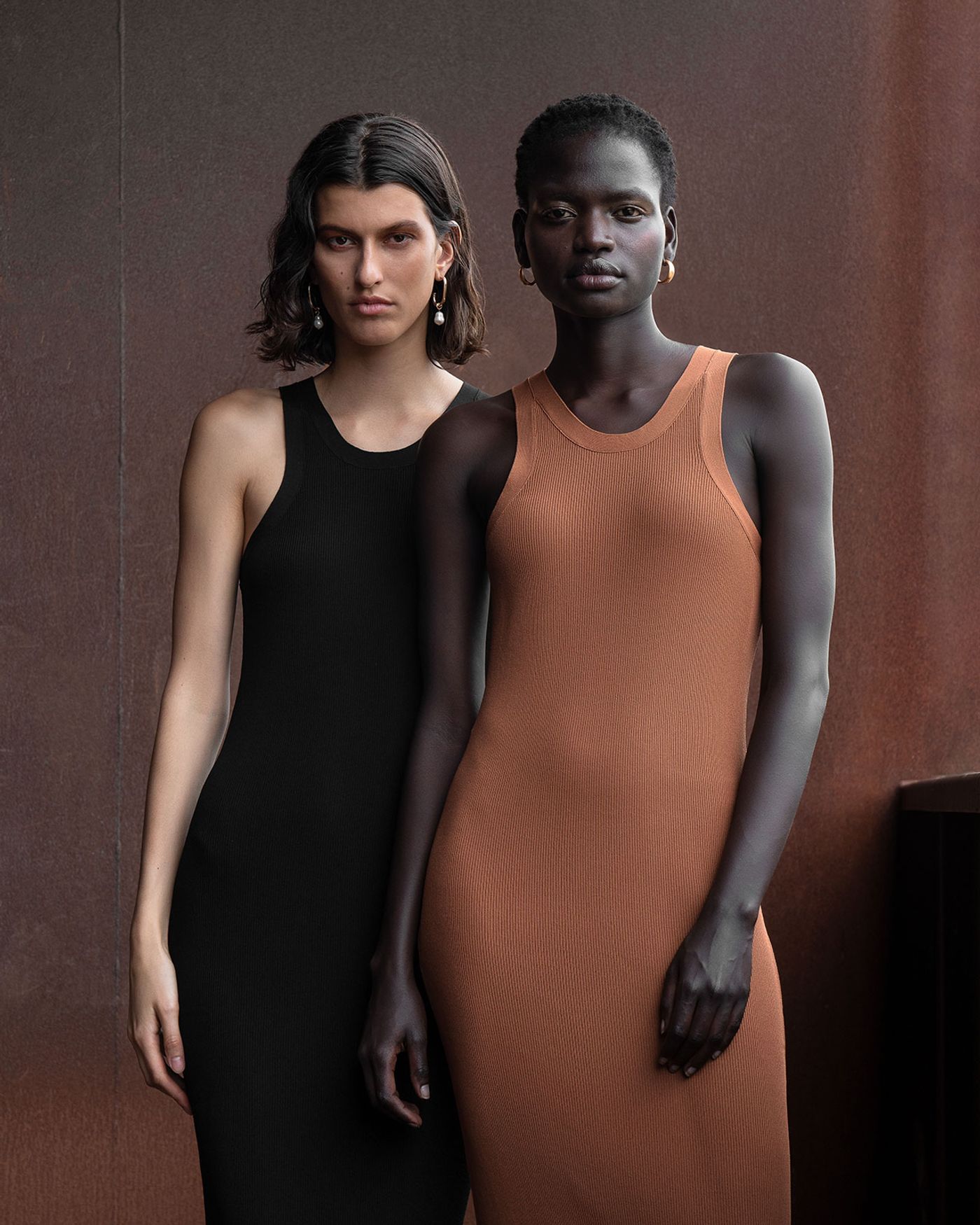
Photography by George Kroustallis.
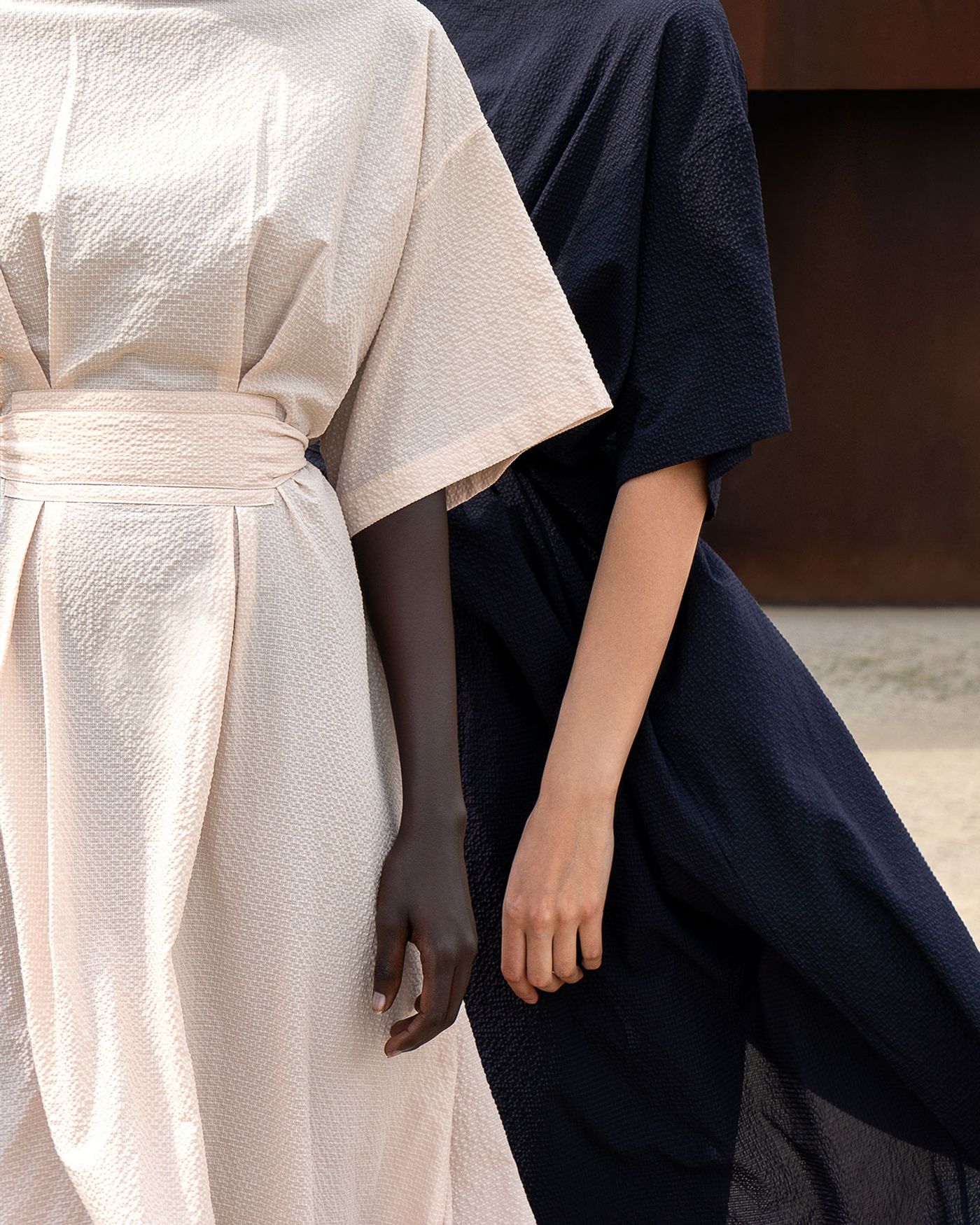
Photography by George Kroustallis.
Drawing inspiration from both the stark geometry of the steel tower and the fluid shapes of the rugged landscape, Kroustallis and long-time collaborator stylist Jade Sheils selected pieces from architecture-inspired fashion brands such as Maison Margiela, Alexander McQueen, Totême, LVIR, The Row, and Aeyde that converse with the location. “We placed an emphasis on exploring interesting shapes, displayed structure, forms, and an emphasis on materials”, Kroustallis explains, “exactly because that's how I approach architecture too”.
Kroustallis has captured his two models as they make their way to the top of the tower, their slim silhouettes and various outfits in dialogue with the ever-shifting perspectives of the steel structure, as they explore the surrounding landscape. Devoid of people and extraneous elements, the camera lens focuses exclusively on his two subjects: fashion and architecture. “There’s something magical to me about stripping down an image to these core elements and elevating them as much as possible”, he says. The stripped-down, minimalist aesthetic reveals multiple pairs of juxtapositions behind the principal fashion/architecture theme such as natural/manmade, organic/geometric, and light/shadow – the choice of a white and a black model adds yet another yin and yang layer.
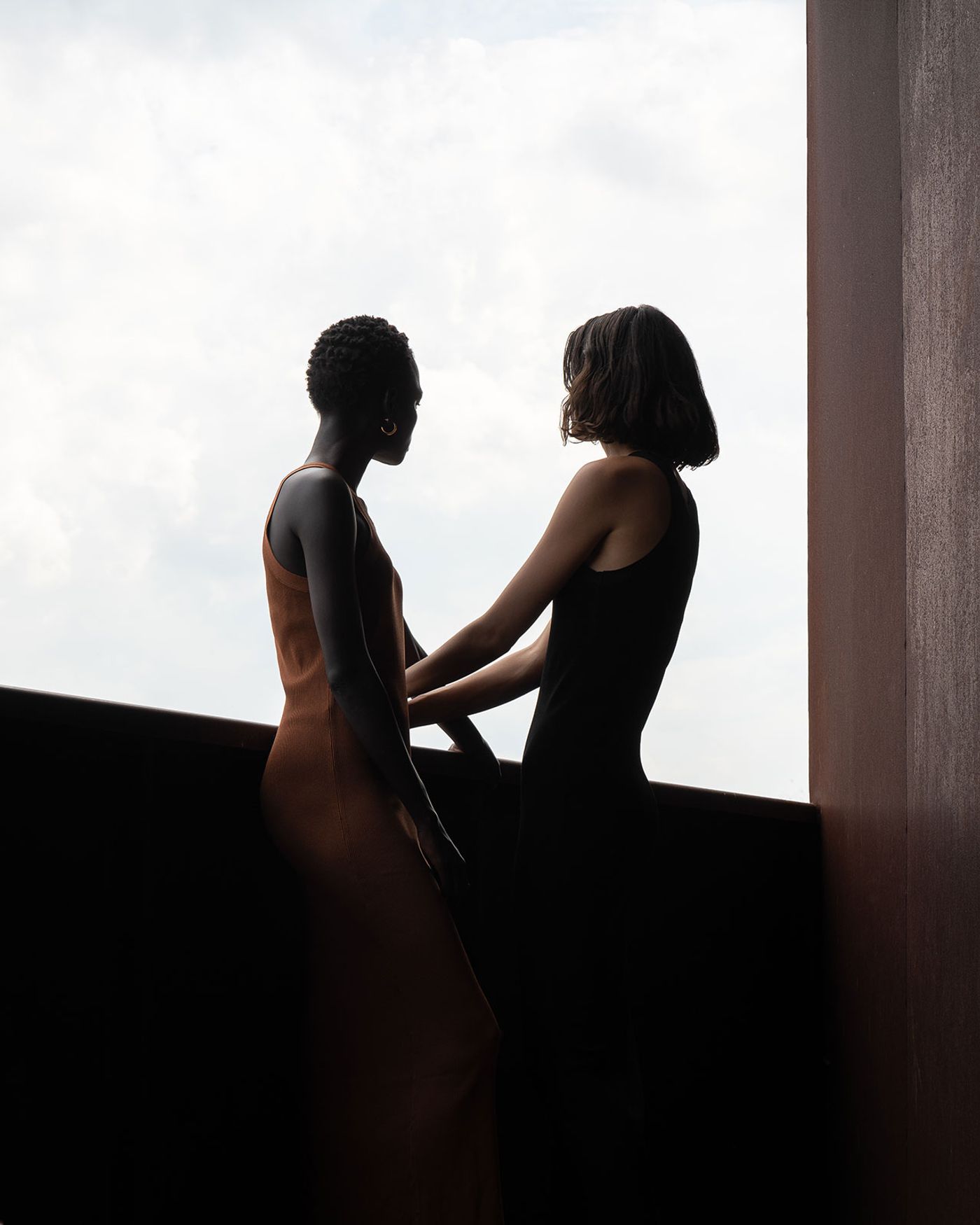
Photography by George Kroustallis.
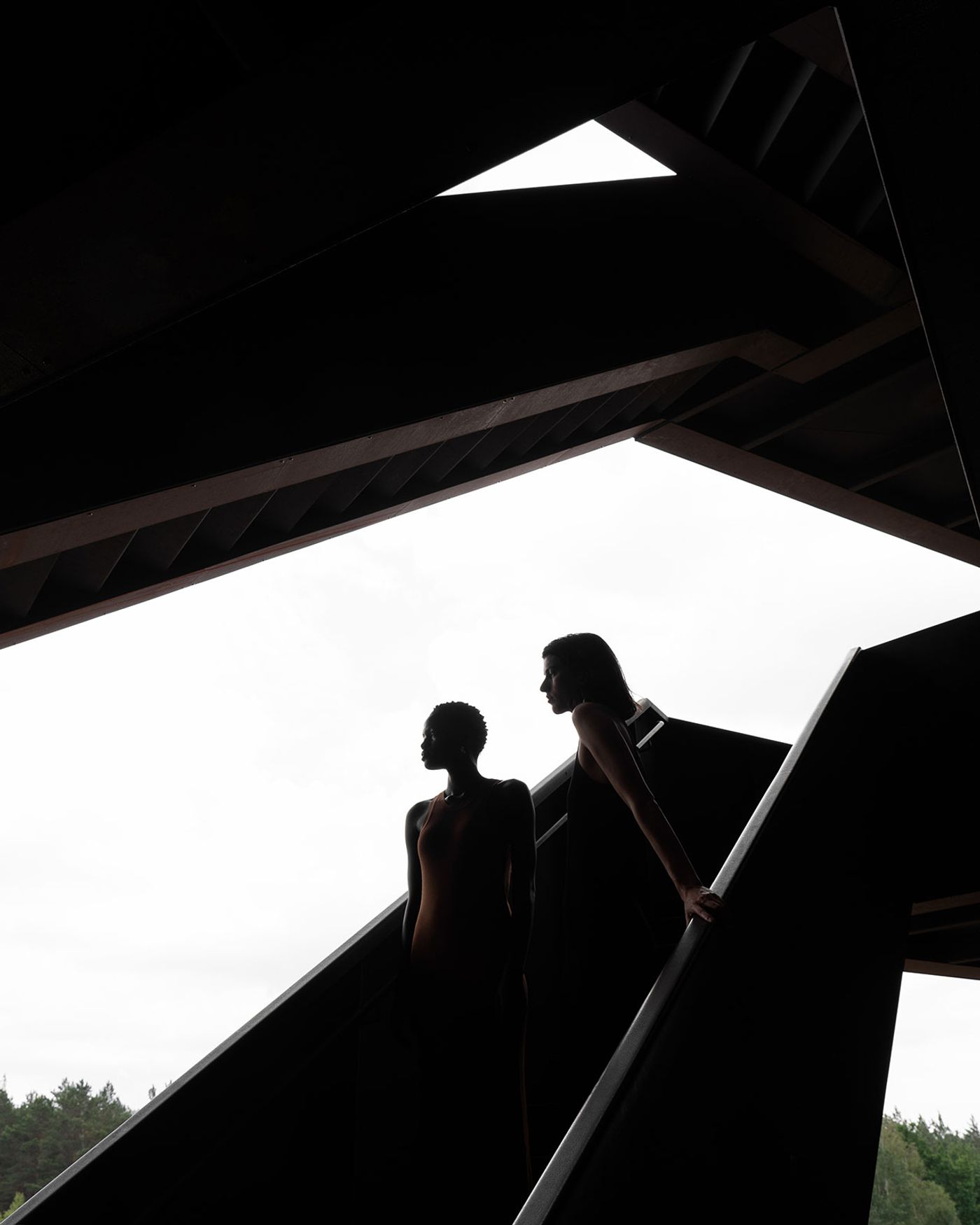
Photography by George Kroustallis.

Photography by George Kroustallis.
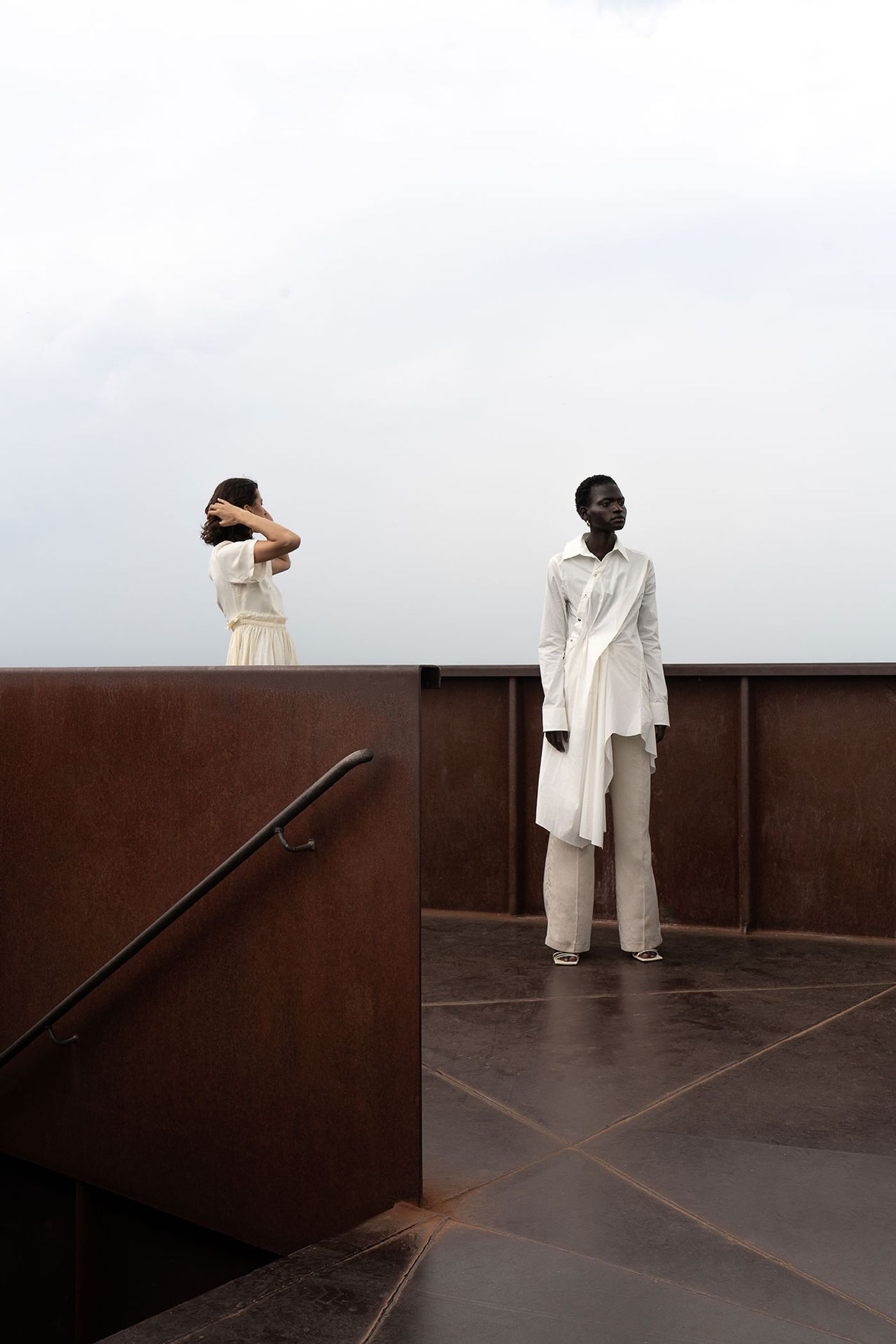
Photography by George Kroustallis.

Photography by George Kroustallis.
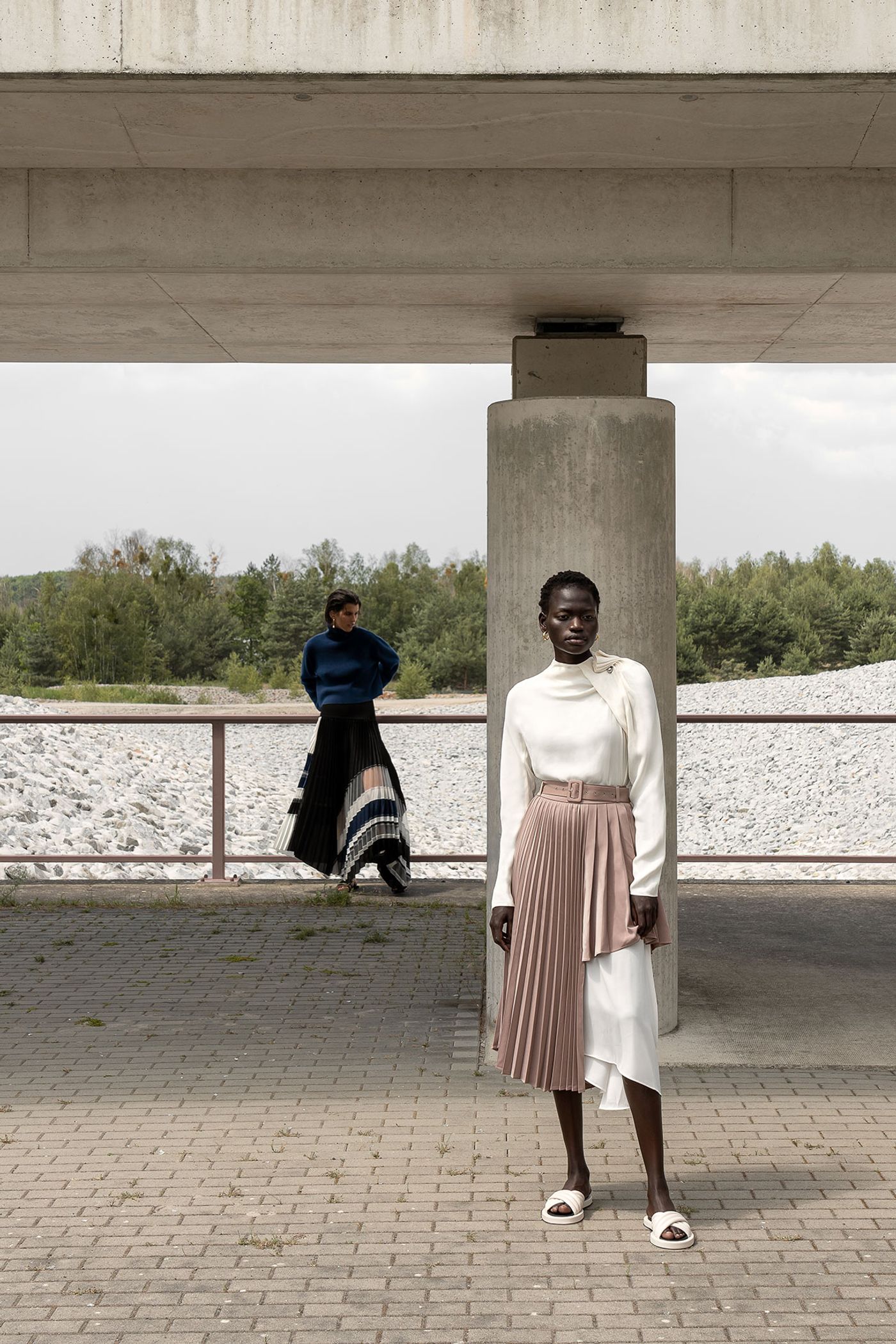
Photography by George Kroustallis.
Of course, as Kroustallis admits, photographing fashion models is very different from capturing architecture – you have to be incredibly attentive during fashion shoots, “directing the models and also leading the team around you so you can’t be fully relaxed”, while with architecture, “your theme is not going anywhere”. Nevertheless they can be way more similar than one would think he believes. “Body is architecture, and architecture is body”, he explains, “what I’m interested in is looking for structure, texture and light, and that applies beautifully in both subjects”.
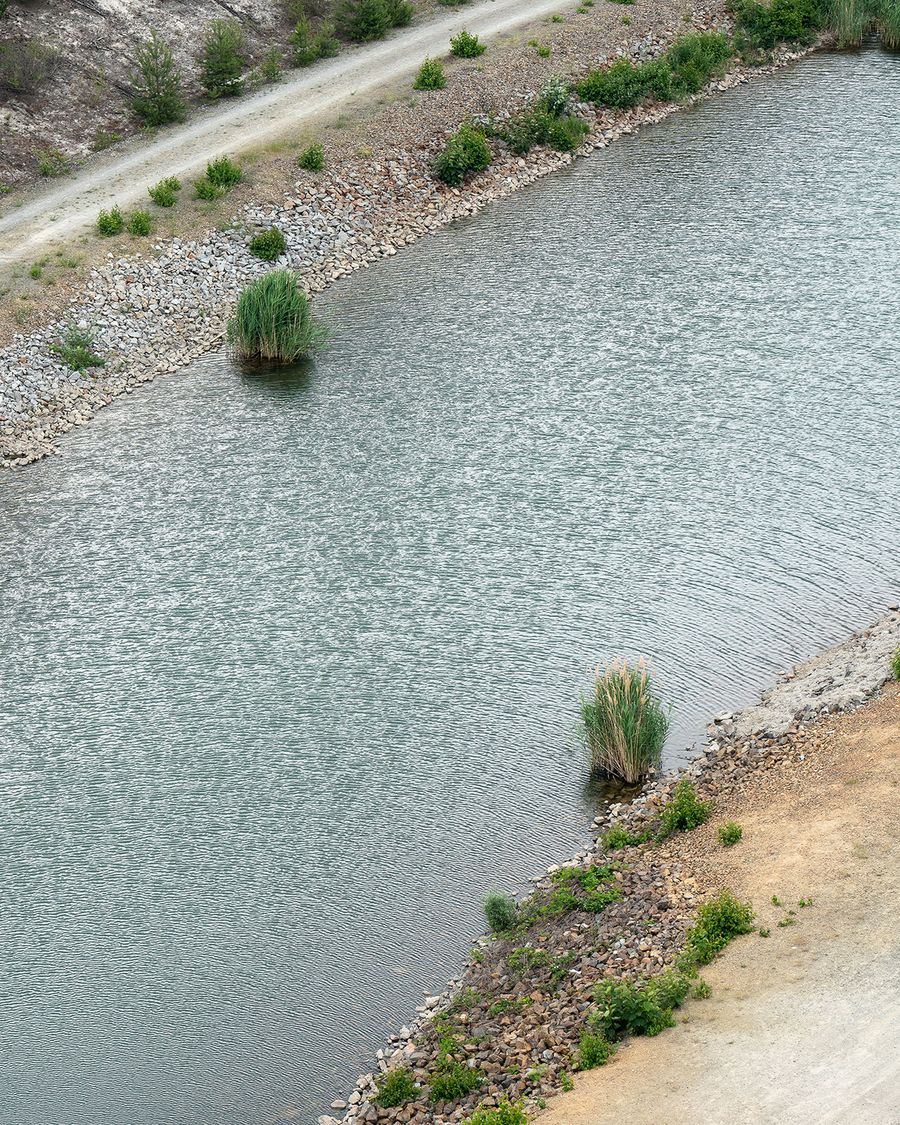
Photography by George Kroustallis.
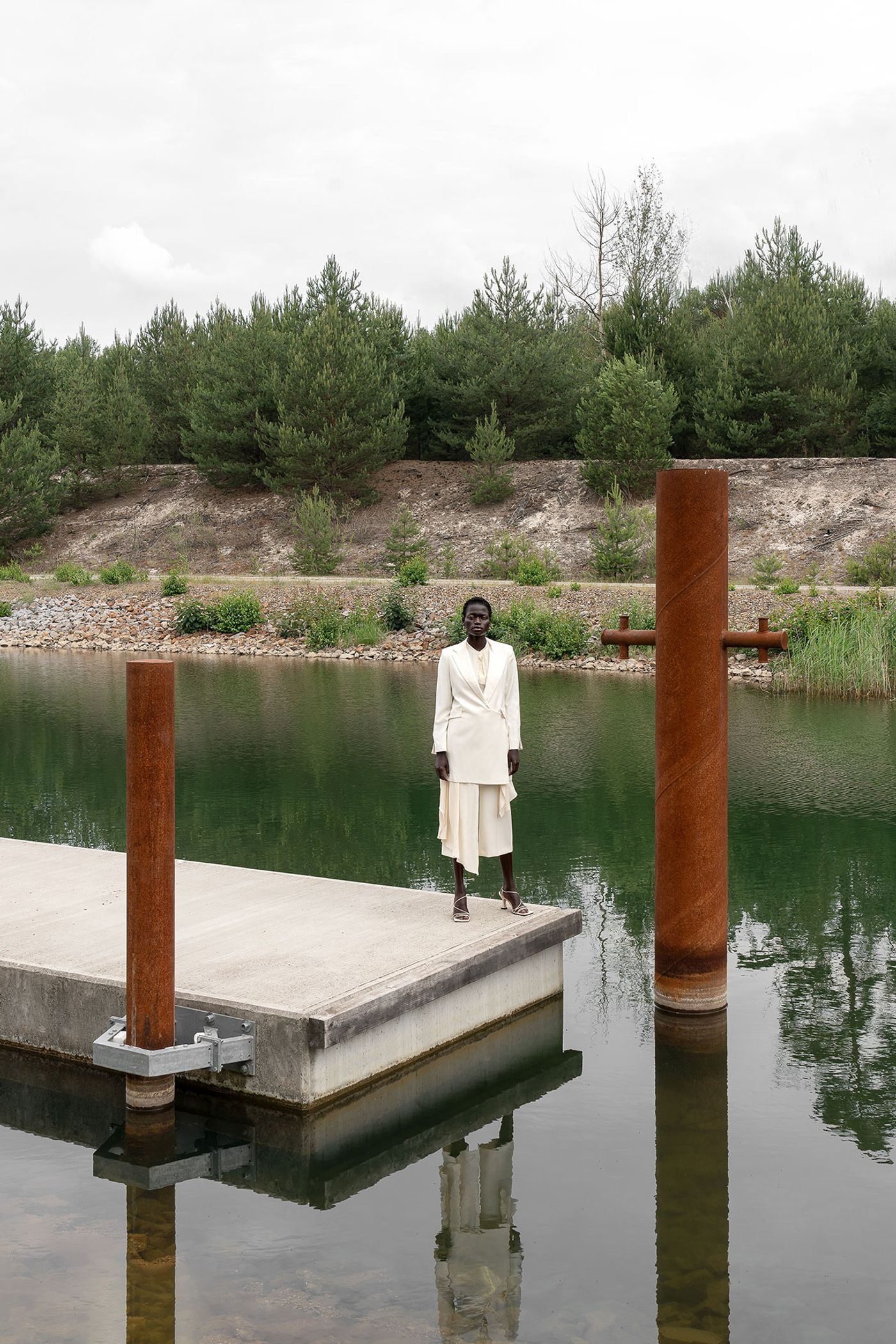
Photography by George Kroustallis.
A fascination with the female form is yet another reason behind Kroustallis’ cross-disciplinary drive; in his view, femininity is the ideal counterpoint to architecture. “I’d have to be crazy to not see the parallels between the amazing organic curves found in Zaha Hadid’s architecture and the beautiful curves of a female body”, he points out. “I want my work to be an ode to what I consider both beautiful and emotion-provoking”, he adds, “whether that’s skin or fabric texture or the concrete façade of a building”, and from what we can see he’s quite successful at it.
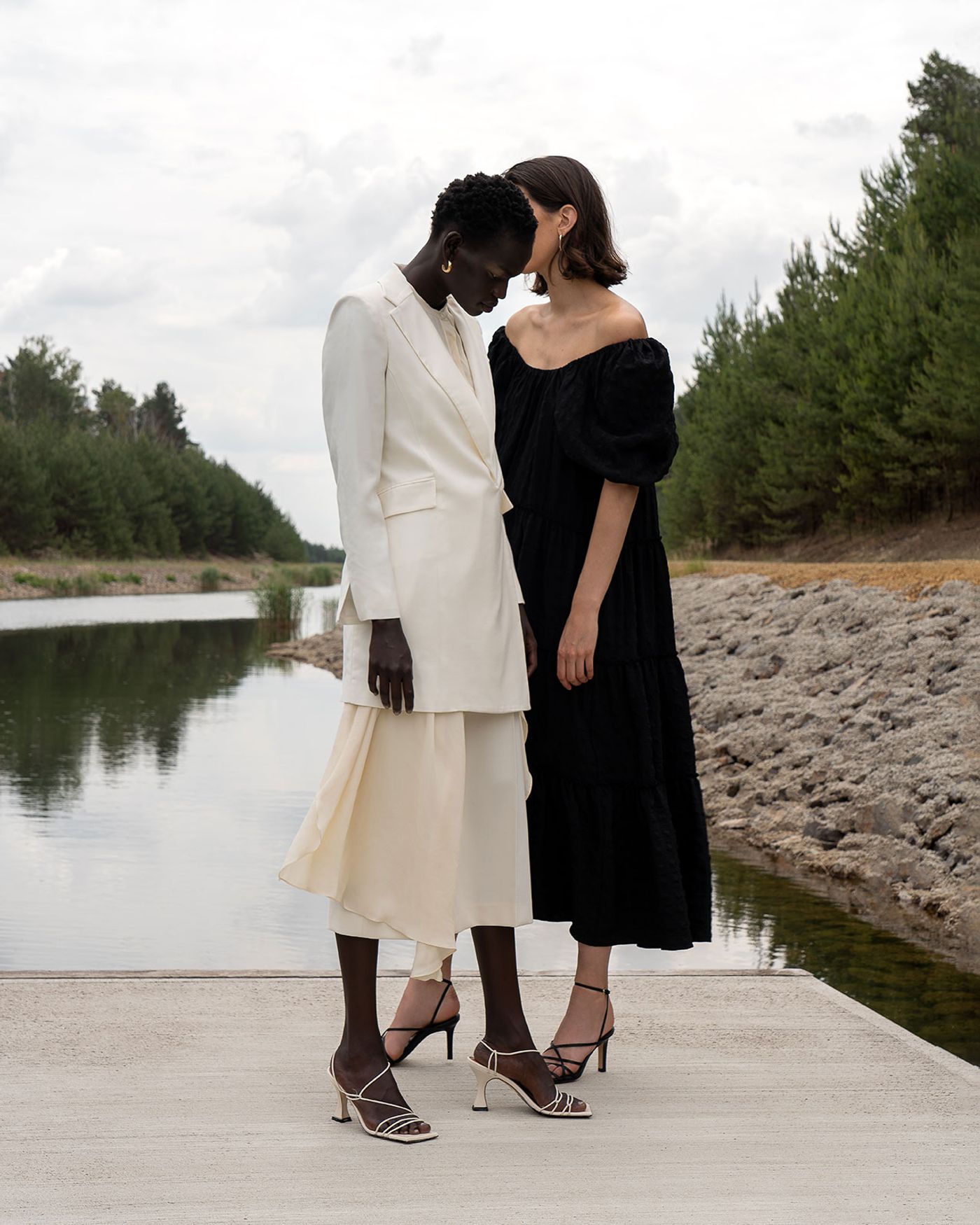
Photography by George Kroustallis.
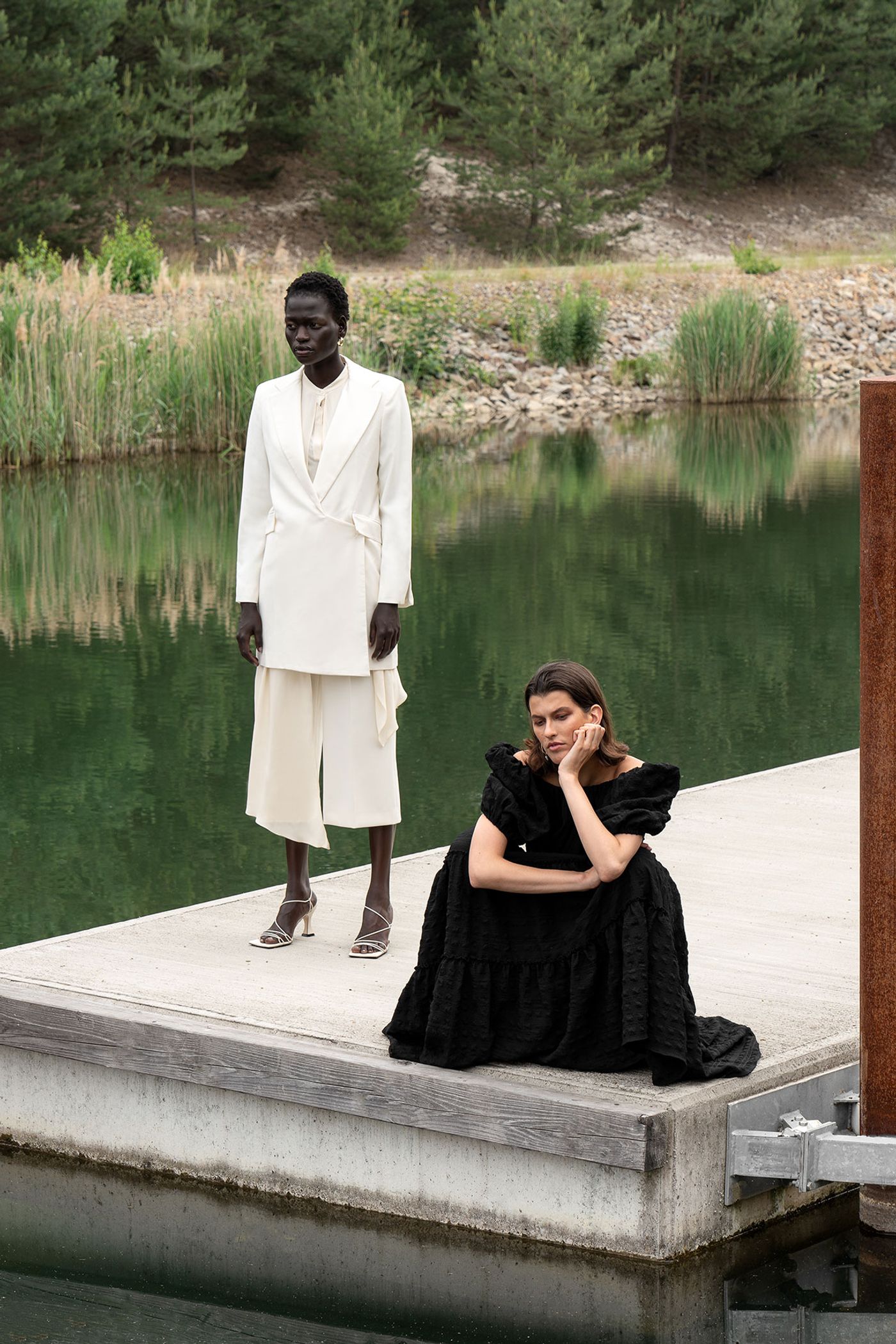
Photography by George Kroustallis.
"Body is architecture, and architecture is body". - George Kroustallis

Photography by George Kroustallis.
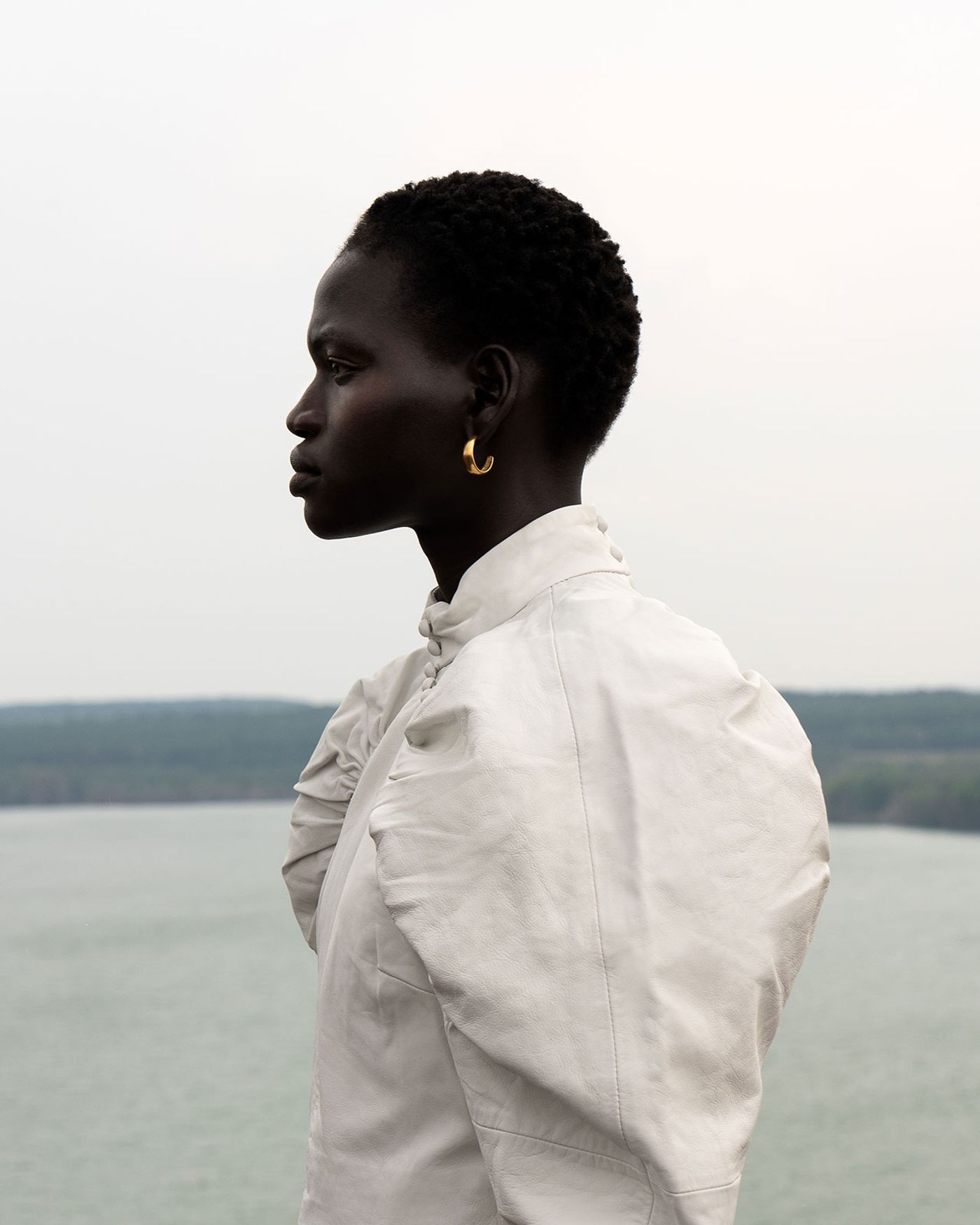
Photography by George Kroustallis.